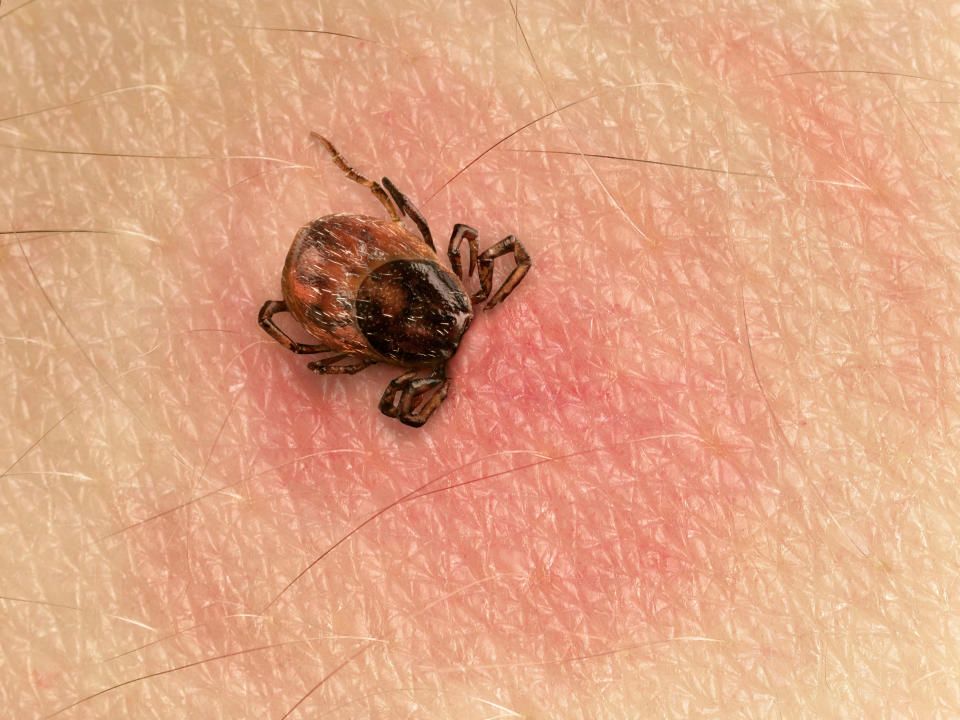Ticks are waking up across Canada, and they might be more resilient: What you need to know
A Canadian veterinarian shared some insight into how some of the arachnids might be "fitter, better, faster and stronger."
This article is for informational purposes only and is not a substitute for professional medical advice, diagnosis or treatment. Contact a qualified medical professional before engaging in any physical activity, or making any changes to your diet, medication or lifestyle.
Ticks are starting to wake up across Canada, and experts are warning people their initial beliefs about the creepy, crawly arachnids might no longer ring true.
For this year's National Tick Awareness Month, the Canadian Veterinary Medical Association (CVMA) is informing people that ticks might be "fitter, better, faster and stronger" than before. That's hooked around recent research indicating ticks carrying bacteria that causes infections like Lyme disease and anaplasmosis might be more resilient, especially when it comes to colder weather. Ticks can survive in any season, so long as it's more of a mild day.
"We want people to be aware that they should be a little bit more cautious as we're having this strange weather," Dr. Maggie Brown-Bury, Newfoundland and Labrador Representative on CVMA Council explained. "The other thing, too, is that it actually does not matter if there's still snow on the ground. It just matters that it's above four degrees Celsius.
"Really, tick season can become all year — or almost all year depending on where you live — if you're having those really mild days. We really want people to be aware of that. Not to think of it as, 'Oh, it starts in April.' It definitely could be active ticks in March or even February."
The St. John's-based small animal veterinarian gave Yahoo Canada some insight into ticks and how people can stay safe as the weather gets warmer. Read on to learn more about Lyme disease and how to stay safe around these tiny pests.
Ticks and Lyme disease
While the risk of contracting Lyme disease from ticks is low, there are more than 40 species across Canada — and populations might be growing rapidly. According to the CVMA, tick risk in Canada has grown "dramatically" over the last decade.
Brown-Bury reiterated that sentiment. In Newfoundland, ticks weren't really a problem in the past. But as people travel, animals migrate and our climate changes, she said they're increasingly becoming an issue.
Between 2020 and 2021, the number of reported Lyme disease cases increased by 150 per cent — however, that number could be even higher since some cases may be "undetected" or "unreported" to the federal government. In 2022, provincial public health units reported 2,168 human cases of Lyme disease in Canada.
What is Lyme disease?
Lyme disease is an infection caused by the bacteria Borrelia burgdorferi, spread through bites from an infected tick.
According to the Centers for Disease Control and Prevention (CDC) ticks can attach themselves to any part of the body. However, they are often found in the groin, armpits and scalp and must typically be attached to the body for 36 to 48 hours before Lyme disease bacterium can be transmitted.
"We're never going to get rid of ticks. We just have to know how to be safe."Dr. Maggie Brown-Bury
What are symptoms of Lyme disease?
Lyme disease symptoms can often be mistaken for the flu. Within the first three to 30 days after a tick bite, a person can experience fever, chills, headache, swollen lymph nodes, muscle aches and fatigue.
A rash (Erythema migrans) at the site of the tick bite can occur in about 70 to 80 per cent of infections, on average a week after infection. The rash can grow up to 12 inches in size and may feel warm or hot to the touch.
Days to months after infection, symptoms can progress to include a severe headache and neck stiffness, while additional rashes may develop on other areas of the body. Facial palsy, arthritis, nerve pain, dizziness, heart palpitations, shooting pains or tingling in the hands or feet as well as problems with short-term memory can also arise.

Why tick bites are bad, and what to do if you've been bitten by a tick
If you've been bitten by a tick, you should remove the tick with fine-tipped tweezers and seal the tick in a container in your freezer. You should also wash your hands and the bite site with warm water, soap or rubbing alcohol. If you develop symptoms within a few days, bring the tick with you to your doctor.
Contact your doctor if you are unable to remove the tick as soon as possible, if a rash appears and gets bigger or if the bite site gets infected.
How do you prevent tick bites?
While there is no human vaccine against Lyme disease, the best form of protection the infection is to prevent tick bites. As ticks become more resilient, Brown-Bury urged people that they're also spreading, and being further north doesn't necessarily prevent you from encountering ticks.
"The big thing is to just not make assumptions," she noted. "I think that ties back in to the 'fitter, faster, stronger.' There might've been some thoughts in the past that there will be a limit to how far north the ticks can go because of the cold. But now, we're finding that being infected with the bacteria that causes Lyme disease might make them more resilient to those colder winters."

Be sure to examine yourself thoroughly for ticks around your hairline, ears, armpits, groin, belly button and the back of your legs for ticks once you return indoors. The CDC suggested showering to help wash off potentially unattached ticks that you may not have seen. Examine your clothes and if possible, put them in the dryer for at least ten minutes to kill any ticks that may have made their way indoors.
Ticks often migrate through animals, meaning your pet could be a carrier or ticks into your home. Aside from asking your veterinarian about a suitable tick prevention product, be sure to check your pet around the ears, eyelids, tail, collar and under their legs for ticks.
Brown-Bury said if you're worried about ticks being in your area, the best thing is to contact your local veterinary hospital since they will likely be the first to know if ticks are around.

Reduce ticks in your backyard
While many people used to believe you had to travel into a wooded area to come across ticks, many ticks are living right in their own backyard.
You can help reduce the possibility of ticks by ensuring that your lawn and property is not a suitable environment for ticks. Make sure your lawn is frequently mowed, trees and bushes trimmed to allow for sunlight (which ticks don't like) and remove any weeds or brush from your yard. Remove any excess furniture and keep swing-sets and garbage away from wooded areas.
Additionally, you can create a barrier around your property of wooden chips or gravel to restrict tick movement and migration into the rest of your lawn.
Let us know what you think by commenting below and tweeting @YahooStyleCA! Follow us on Twitter and Instagram.

